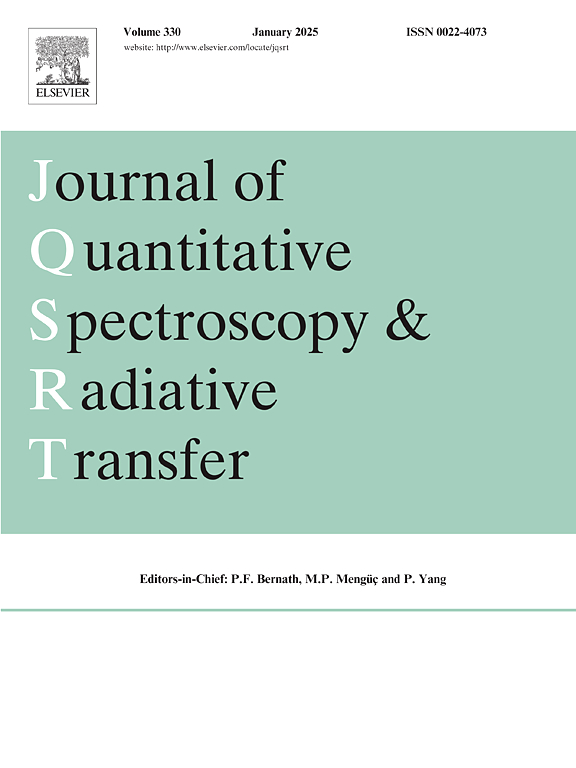On the use of the Axelrod formula for thermal electron collisions in astrophysical modelling
IF 2.3
3区 物理与天体物理
Q2 OPTICS
Journal of Quantitative Spectroscopy & Radiative Transfer
Pub Date : 2025-06-14
DOI:10.1016/j.jqsrt.2025.109545
引用次数: 0
Abstract
The Axelrod approximation is widely used in astrophysical modelling codes to evaluate electron-impact excitation effective collision strengths for forbidden transitions. Approximate methods such as this are a necessity for many heavy elements with open shells where collisional data is either non existent or sparse as the use of more robust methods prove prohibitively expensive. Atomic data for such forbidden transitions are essential for producing full collisional radiative models that do not assume Local-Thermodynamic-Equilibrium (LTE). In this short work we present the re-optimization the simple Axelrod formula for a large number of在天体物理模拟中使用阿克塞尔罗德公式进行热电子碰撞
Axelrod近似被广泛应用于天体物理模拟程序中,以评估电子碰撞激发的有效碰撞强度。对于许多具有开放壳层的重元素来说,这样的近似方法是必要的,因为碰撞数据要么不存在,要么稀疏,因为使用更健壮的方法被证明是非常昂贵的。这种禁止跃迁的原子数据对于产生不假设局部热力学平衡(LTE)的完整碰撞辐射模型是必不可少的。在这篇简短的文章中,我们针对大量的r矩阵数据集,从Fe和Ni到Sr、Y和Zr的第一个r过程峰元素,再到更高的Z体系Te、W、Pt和Au,提出了简单Axelrod公式的重新优化。我们表明,在这种碰撞辐射模型中,禁止跃迁的近似处理可能是不准确的重要来源。我们发现,在不同的系统和电荷态下,优化系数有很大的差异,尽管根据基态构型的轨道结构可以看出一些一般的趋势。这些趋势可能会为未来无法获得r矩阵数据的元素的计算提供更好的估计。
本文章由计算机程序翻译,如有差异,请以英文原文为准。
求助全文
约1分钟内获得全文
求助全文
来源期刊
CiteScore
5.30
自引率
21.70%
发文量
273
审稿时长
58 days
期刊介绍:
Papers with the following subject areas are suitable for publication in the Journal of Quantitative Spectroscopy and Radiative Transfer:
- Theoretical and experimental aspects of the spectra of atoms, molecules, ions, and plasmas.
- Spectral lineshape studies including models and computational algorithms.
- Atmospheric spectroscopy.
- Theoretical and experimental aspects of light scattering.
- Application of light scattering in particle characterization and remote sensing.
- Application of light scattering in biological sciences and medicine.
- Radiative transfer in absorbing, emitting, and scattering media.
- Radiative transfer in stochastic media.

 求助内容:
求助内容: 应助结果提醒方式:
应助结果提醒方式:


